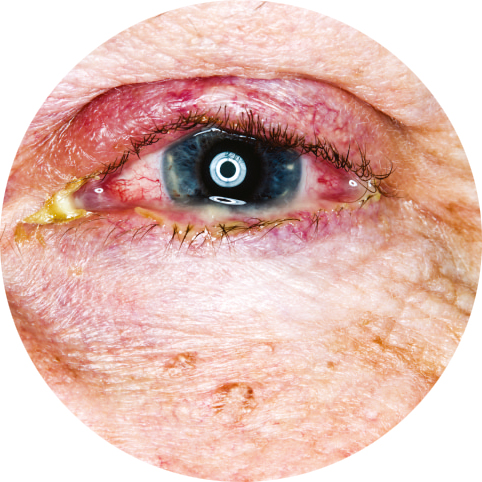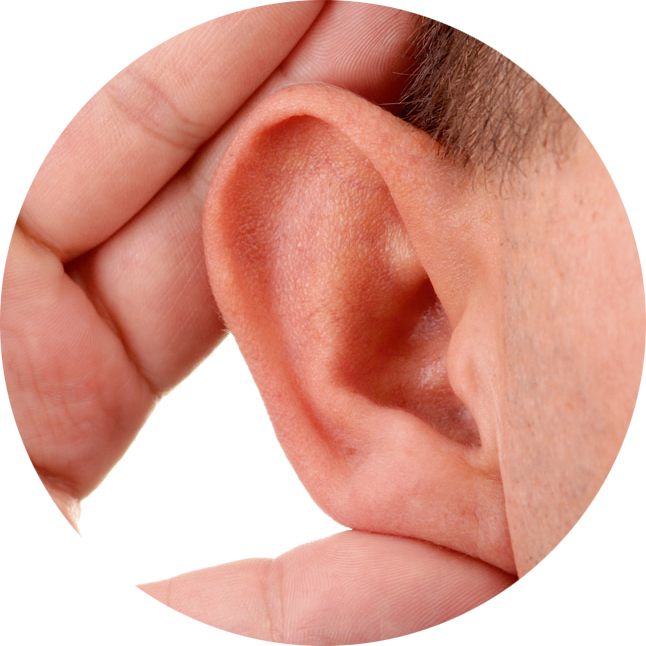A-Z of sound and vision
In OTC
Follow this topic
Bookmark
Record learning outcomes
Ears and eyes are sensitive and important organs, susceptible to a range of conditions. We look at some of the complaints you’ll come across in the pharmacy, and at how to recognise them and recommend the right treatment.

Some two million people in the UK are living with sight loss, and by 2020 the number is set to rise to 2.25 million, according to the Royal National Institute of Blind People (RNIB). The UK’s ageing population is a major factor, with one in five people over the age of 75 living with sight loss, while obesity, diabetes and smoking can also contribute. Additionally, over 10 million people in the UK have some form of hearing loss – predicted to rise to 14.5 million by 2031, according to Action on Hearing Loss.
Like sight loss, ageing is a major factor, with 70 per cent of over 70s and 40 per cent of over 50s having some form of hearing loss. But these problems are not inevitable. In fact, over half of sight cases are avoidable, says the RNIB, and there’s plenty that pharmacy staff can do to help customers protect their senses.
Astigmatism
This common eye problem occurs when the cornea (a clear membrane covering the front of the iris and pupil) isn’t perfectly curved and therefore causes blurred or distorted vision. Untreated astigmatism can cause headaches and eye strain. It can be diagnosed during an eye examination, so it’s important to refer customers to their optician, and can be corrected with glasses, contact lenses, or laser treatment.
Blepharitis
Blepharitis causes the edges of the eyelids to become inflamed and is characterised by itchy, sore eyelids (which may be stuck together on waking), crusty eyelashes, a gritty feeling in the eyes and photophobia. It accounts for one in 20 eye problems seen by GPs and is most common in those over the age of 40. It can be caused by a bacterial infection or a complication of rosacea or seborrhoeic dermatitis. There is no cure, but blepharitis can be controlled with daily eye hygiene, even when symptom-free. Advise customers to:
- Apply a warm compress to their eyelids for five to 10 minutes
- Rub their closed eyelids with a cotton bud or clean finger to loosen crusty eyelashes
- Use a cleaning solution or cotton bud and water to clean their eyelids. If blepharitis doesn’t improve with daily cleansing, antibiotic drops or ointment may be necessary, so refer customers to the pharmacist.
Conjunctivitis
 There are three types of conjunctivitis: infective, allergic and irritant. Infective conjunctivitis is caused by a bacterial or viral infection and eyes will look pink and lids may be inflamed. A sticky, yellow discharge in the eyes on waking is also common. Most cases resolve in one to two weeks without treatment. Antibacterial lubricant eye drops and/or ointment can ease sore and sticky eyes, or antibiotic eye drops, available OTC may be used.
There are three types of conjunctivitis: infective, allergic and irritant. Infective conjunctivitis is caused by a bacterial or viral infection and eyes will look pink and lids may be inflamed. A sticky, yellow discharge in the eyes on waking is also common. Most cases resolve in one to two weeks without treatment. Antibacterial lubricant eye drops and/or ointment can ease sore and sticky eyes, or antibiotic eye drops, available OTC may be used.
Allergic conjunctivitis is caused by a reaction to pollen, dust mites or pets. Watery, itchy eyes are the most common symptoms. Antihistamine eye drops can be recommended to block the action of histamine (which causes the allergic response) or mast cell stabilisers can be suggested to reduce the amount of histamine released when the allergen is encountered.
Finally, irritant conjunctivitis is caused by contact with an irritant such as shampoo, chlorine or smoke. Eyes look red and can feel sore, but symptoms often resolve once the irritant is removed. Eye drops containing naphazoline can be suggested to relieve redness and irritation.
Dry eye
Dry eye is a common condition and occurs when insufficient tears are produced or tears evaporate too quickly. It is particularly common in the elderly. Symptoms include dry, gritty and sore eyes. Dry eye can be caused by hormonal changes, certain medications (especially oral contraceptives and antihistamines), wearing contact lenses, health conditions including rheumatoid arthritis and diabetes, and environmental factors such as low humidity and high pollen.
Lubricant drops can help by replacing missing water in the tear film. Preservative-free drops are recommended for severe dry eye or contact lens wearers, while oily tear drops replenish the oily part of the tear film and are now available in spray as well as drop format. Eye ointments are best for overnight use.
Ear wax
Too much ear wax can cause blocked, painful ears and hearing loss, while insufficient wax leads to cracked, sore skin and possible infections. It can also cause tinnitus, earache and itchiness. If excess or hardened ear wax is causing problems, recommend ear drops to soften and loosen wax so it can be easily removed. Drops should be used at room temperature, two to three times daily for up to five days.
Foreign body in eye
Tiny pieces of wood, grit, metal, etc, can become lodged in the eye, causing irritation and pain. To remove loose particles, suggest customers ‘flush out’ the eye with an eye wash or clean water for 10-15 minutes. If this doesn’t help then seeking medical advice is important. Customers should never try to remove anything that’s embedded in the eye.
Glue ear
This common childhood condition affects one in five children – usually at around the age of two. It is caused by a build-up of fluid in the middle ear and the main symptom is hearing loss. It may happen after an ear infection or in children who have allergies. The condition usually clears without treatment in about three months. If hearing loss is significant or it lasts more than three months, it can be treated by placing tiny tubes (grommets) in the ears to drain fluid.
Hearing tests
Over 10 million people in the UK have some form of hearing loss, yet it takes an average of 10 years for most to address their problem. Encourage customers to go for regular hearing tests so that problems can be picked up and addressed early on. Customers can visit their GP for an initial hearing test or many opticians and some pharmacies offer hearing tests as well.
 Itchy eyes
Itchy eyes
Itchy eyes can be caused by allergic conjunctivitis – triggered by allergens such as pollen, dust mites and pet dander. Dry eye, blepharitis, or a reaction to contact lens solutions (in particular to the preservatives in them) can also cause itchy, and often watery, eyes. Soothing eye drops can relieve symptoms, but customers should also identify the cause and try to limit their exposure to whatever is causing the problem.
Juvenile macular degeneration
This term includes several conditions that cause sight loss in children and adolescents, including Stargardt’s disease, Best disease and juvenile retinoschisis, all of which cause loss of central vision. The diseases are genetic and can’t be cured, but patients can be helped with visual aids and adaptive training.
Keratoconus
This eye condition causes the normally dome-shaped cornea to thin and develop a cone-like bulge, affecting the eye’s ability to focus properly. Glasses or contact lenses can be used to correct vision in the early stages, while in the later stages a new treatment called CXL (corneal collagen cross-linking) may be appropriate. This uses UV light and vitamin B2 drops to stiffen the cornea and is effective in over 90 per cent of patients.
Lazy eye
A lazy eye is a childhood condition that occurs when the vision in one eye does not develop properly. This usually means that the child can see less clearly out of one eye and relies more on the “good†eye. An estimated one in 50 children will develop a lazy eye and children are usually diagnosed with the condition around the age of four.
Glasses can help if worn all the time or a patch covering the good eye will train the weaker eye to improve. It’s easiest to treat before the child is seven years old, as after this age, the eyes and brain become too mature to change.
Macular degeneration
Commonly known by its full name – age-related macular degeneration (or AMD) – this condition is caused by a problem with the macula, a spot in the centre of the retina. With age, the light-sensitive cells in the macula break down, affecting central vision. There are two types of AMD – dry and wet. Dry AMD affects 75 per cent of people and develops when there is a buildup of waste material under the macula.
In early stages, vision loss is minor but it can worsen. Wet AMD is more serious and occurs when abnormal blood vessels grow under the retina. There is no proven treatment for dry AMD. For wet AMD, patients can be treated with injections of ranibizumab, which stops abnormal blood vessels growing and bleeding under the retina.
Nearsightedness (myopia)
People who are nearsighted, also known as short-sighted, can’t see distant objects clearly, but are able to focus on things close up. It affects three in 10 people in the UK. Glasses or contact lenses, which move the focus of the light backwards onto the retina, will correct vision. Laser eye surgery can correct the problem permanently.
Otitis infections
There are two types of otitis infection: externa, affecting the outer ear, and media, affecting the middle ear. Otitis externa causes inflammation of the external ear canal and is often called ‘swimmer’s ear’ as repeated exposure to water makes the ear canal more vulnerable.
Symptoms usually affect only one ear and include pain, itchiness, discharge and temporary hearing loss. An OTC product containing a solution of acetic acid is available for the treatment of mild otitis externa. It acts as an antibacterial and antifungal in the external ear canal, but should only be used by adults and children over 12.
Severe cases may require a topical anti-inflammatory product containing an antibiotic or antifungal on prescription. Otitis media mainly affects children under 10 and symptoms include ear pain, fever, irritability, poor appetite and impaired hearing. Treatment sometimes involves a course of antibiotics.
Perforated eardrum
This is a hole or tear in the eardrum commonly caused by a middle ear infection, injury, sudden loud noise or a change in air pressure (e.g. from flying or scuba diving). The main sign is hearing loss, which normally resolves once the eardrum has healed, but patients may also have ear pain, discharge and a fever. Advise sufferers to keep the ear dry. It normally heals by itself in a few weeks, but OTC painkillers can be recommended to ease pain if required.
 Quiet sounds
Quiet sounds
If a customer complains that everyone speaks too quietly or they can’t hear the TV or radio as well as they could, they should have a hearing test. If hearing loss is ignored, it can lead to social isolation and depression. In the UK, four million people who don’t have hearing aids would benefit from using one, says the charity Action on Hearing Loss.
Retinopathy
Diabetes affects the tiny blood vessels of the eyes, which can then become blocked or weak, affecting the retina and vision. This is known as retinopathy or diabetic retinopathy. Some 40 per cent of people with type 1 diabetes and 20 per cent with type 2 diabetes have some degree of the condition.
Regular retinal screening tests are essential for people with diabetes so that early signs of retinopathy can be detected. Laser treatment can be used if vision is affected, but it is important to emphasise that well-controlled diabetes reduces the risk of the condition developing or worsening.
Styes
Usually caused by a bacterial infection, a stye is a small abscess on the eyelid that can also cause the eye to become red and watery. People with blepharitis are particularly prone to styes. A warm compress held against the eye will encourage pus to release and it usually heals itself in three to four days, but if it worsens, the patient may need to see a GP.
Tinnitus
Tinnitus is when a person hears ‘sounds’ from within their head, such as buzzing, humming, whistling and hissing. Hearing can also be impaired. It’s important for patients to see a GP to find out cause of tinnitus. In many cases it can be caused by easily treatable conditions such as an infection or wax build-up. If hearing loss is a factor, a hearing aid will help. Counselling, cognitive behavioural therapy and sound therapy are also available.
Uveitis
This is an inflammation of the middle layer of the eye and mainly affects adults aged between 20 and 60. It’s a leading cause of vision loss and signs include pain, redness, blurred vision, floaters (small shapes floating in the field of vision) and photophobia. Patients should be referred to a specialist for diagnosis and treatment, which may involve corticosteroids to reduce inflammation. Early treatment often gets the best results.
Vertigo
Vertigo is the sensation that you, or the environment around you, is moving or spinning. Other associated symptoms include loss of balance, nausea or sickness, and dizziness. It is a symptom of several different conditions, including Ménières disease, which is a disorder affecting the inner ear. Treatment depends on the cause and severity of the vertigo, but patients should be advised to lay still in a quiet, darkened room during an attack to help ease any symptoms of nausea and reduce the sensation of spinning. If it’s caused by Ménières disease, patients may need to be seen by an ear, nose and throat (ENT) specialist.
Watery eyes
This happens when too many tears are produced or if tears can’t drain properly. It’s most common in the elderly and babies and can be caused by an infection, blepharitis, irritation or an allergy. It may also be caused by narrowed or blocked tear ducts. If the cause is not obvious, like an infection or allergy, and the symptoms are troublesome to the patient, suggest they see a GP. Otherwise, OTC products that address the likely cause can help.
Xanthelasmata
These are small, yellowish raised lumps on the eyelids. They are made up of cholesterol and may be a warning sign of high cholesterol. They can be removed with an acid peel, laser or cryotherapy, but it may also be important to look at the patient’s overall diet and health to address the high cholesterol levels.
Yellow eyes
This is a common sign of jaundice, caused by a build-up of bilirubin in the blood. Other signs include yellowing of the skin and lining of the mouth and nose. Patients will need to see a GP for a diagnosis and treatment.
Zig zags in vision (floaters)
Wavy lines or splotches in vision happen because of changes in the vitreous substance that fills the eyeball. In many cases, these disappear with time, but if they’re troublesome, dark glasses can help. If they become worse, patients will need to see an optometrist or a GP.
Â
